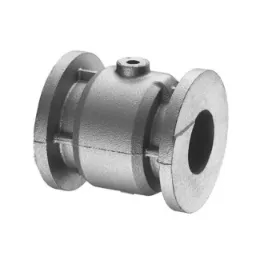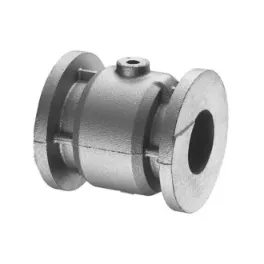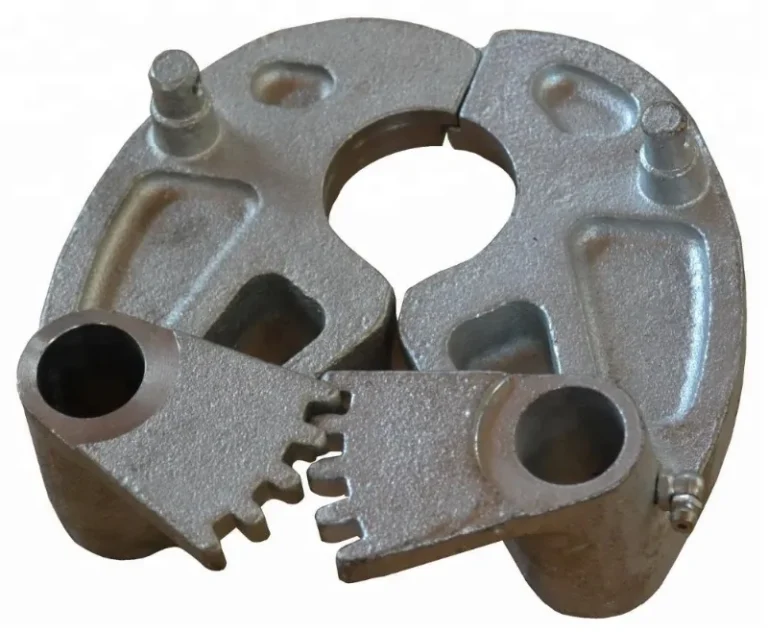
Introduction
Fluid control equipment relies on precision and durability, especially in demanding industrial environments. Valve body castings play a crucial role in ensuring smooth operation, leak prevention, and long service life. This article explores how proper casting design, materials, and production control contribute to high performance valve components used across pumps, pipelines, and control systems.
Valve Body Castings Basics
What Valve Bodies Do in Fluid Systems
Valve bodies act as the core housing for gates, balls, or discs that direct fluid flow. They withstand high pressures, sometimes up to thousands of psi. Good design stops leaks at joints. A small flaw here can cause big downtime in a factory line. Think of them as the tough shell keeping everything in check.
Why Casting Fits Valve Production Perfectly
Casting pours molten metal into molds to shape complex insides without welding seams. It cuts costs for big runs and keeps walls even. Strength comes built in. Factories love it for repeatability. One mold can produce hundreds of identical parts. No wonder it’s the go to method for most valve makers.
Key Materials for Valve Body Casting
Common Alloys in Industrial Valves
Ductile iron handles tough impacts and bends a bit without breaking. Stainless steel fights rust in salty or acidic fluids. Carbon steel works for general use where costs matter. Bronze shows up in marine setups. Each alloy brings its own perks to the table. Pick wrong, and corrosion eats away fast.
Picking the Right Metal for the Job
Factors like fluid type, heat levels, and pressure swings guide the choice. For hot steam lines, high temp alloys prevent warping. Corrosive chemicals need stainless grades. Load cycles affect fatigue life. Smart selection drops repair bills over years. It’s all about matching metal to real-world stress.
Casting Methods for Precise Valve Parts
Sand Casting for Bigger Valve Bodies
Sand molds pack around patterns and get reused after knockout. Great for oversized valves in low quantities. Flexibility shines with odd shapes. Cooling rates vary, but skilled hands control it. Some porosity happens, yet machining fixes most issues. Ideal for prototypes too. Big foundries swear by this old reliable process.
Investment Casting for Tricky Designs
Wax patterns dip in ceramic slurry, then melt out before pouring metal. Results show fine details and thin walls. Surface smoothness cuts polishing time. BaoQi often applies this process to produce intricate valve components for OEM projects. Tight tolerances hold up in high end gear. A bit pricier, but worth it for complexity.
Die Casting for Lighter Valves
Metal injects under pressure into steel dies for rapid cycles. Aluminum or zinc alloys keep weight down. Consistency batch to batch stays high. Suited for compact control units. Flash gets trimmed quick. Production speeds impress in automotive fluid systems. Not for huge parts though.

Quality Checks in Valve Body Casting
Keeping Dimensions Spot On and Surfaces Smooth
Molds get measured often to avoid shrinkage surprises. Controlled pour temps help even cooling. Warpage stays minimal this way. Smooth finishes mean less grinding later. Tolerances hit within thousandths. It all adds up to parts that fit first try on assembly lines.
Spotting Defects and Running Tests
X-ray scans reveal hidden voids without cutting open. Ultrasonic waves bounce off cracks. Pressure tests simulate real use. Dye penetrant highlights surface flaws. BaoQi maintains strict inspection checkpoints for every casting batch. Reject rates drop low with these steps. Better safe than sorry in critical systems.
Design Elements That Boost Valve Performance
Balancing Wall Thickness and Flow Paths
Uniform walls spread stress evenly under pressure bursts. Thicker spots handle bolts better. Smooth channels cut turbulence, saving energy. Erosion slows down inside. Optimized designs extend service life. A little extra thought here prevents early failures in the field.
Smart Gating and Risers to Avoid Defects
Gates feed metal smoothly to fill molds without air traps. Risers supply extra molten feed as it shrinks. Placement matters a ton. Porosity drops sharply with good layout. Castings come out denser. Stronger valves result from these tweaks.
Planning for Machining and Final Touches
Leave stock for drilling ports and facing seals. Thread areas need clean starts. Coatings like epoxy guard against wear. Alignment holes guide assembly. Post process steps turn rough castings into ready parts. Skimp here, and leaks show up quick.
Where Valve Body Castings Shine in Industry
In Pumps and Fluid Transfer Setups
Valves regulate suction and discharge in centrifugal pumps. Cast bodies prevent backflow messes. High flow designs keep efficiency up. Mining slurries demand tough irons. Transfer lines stay reliable with proper castings. Downtime costs add up fast without them.
Pipeline Control and Energy Gear
Oil lines use large cast valves to isolate sections. Power plants throttle steam with heat resistant bodies. Pressure ratings go extreme here. Corrosion resistance fights pipeline acids. Castings hold up in remote spots where fixes are tough.
OEM and Custom Engineering Work
Tailored castings fit specific machinery needs. From mold tweaks to alloy blends. BaoQi supports OEM clients with customized valve casting services, from mold design to final assembly ready parts. Quick turns help product launches. Engineers collaborate close for best fits.
Conclusion
High quality valve body castings form the backbone of reliable fluid control systems. Proper material choice, casting process, and quality testing ensure safety and performance across various industries. BaoQi continues to refine its casting techniques, offering custom engineered solutions that meet the complex needs of modern industrial equipment manufacturers.
FAQ
Q: What’s the main advantage of casting over machining valve bodies from solid bar?
A: Casting shapes complex internals in one go, saves material, and costs less for volume production. Machining wastes more stock and takes longer.
Q: How does temperature affect material choice for valve castings?
A: High temps need alloys like stainless to avoid softening or cracking. Low temps call for ductile options that don’t brittle up.
Q: Can sand casting produce high pressure valve bodies?
A: Yes, with dense molds and proper risers, it handles moderate pressures well, though investment casting edges it for ultra high ratings.
Q: What common defect should factories watch for in cast valves?
A: Porosity from trapped gas weakens walls; X-ray checks catch it early before it causes leaks under load.
Q: Why opt for investment casting in OEM valve projects?
A: It delivers precise details and smooth finishes, perfect for custom intricate designs that machined parts struggle to match affordably.








